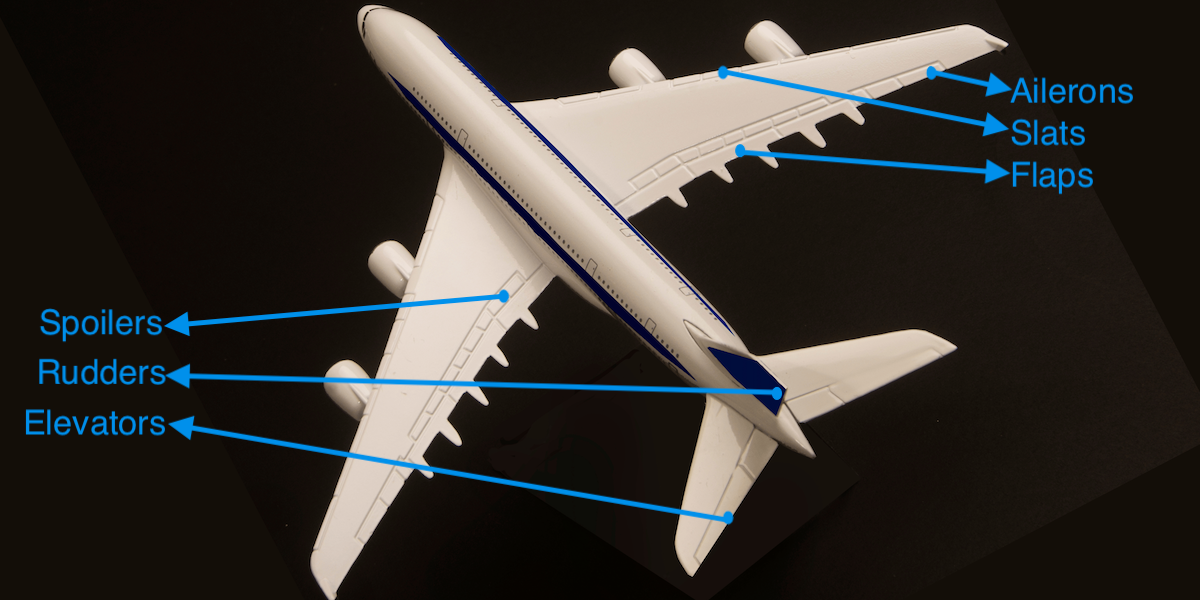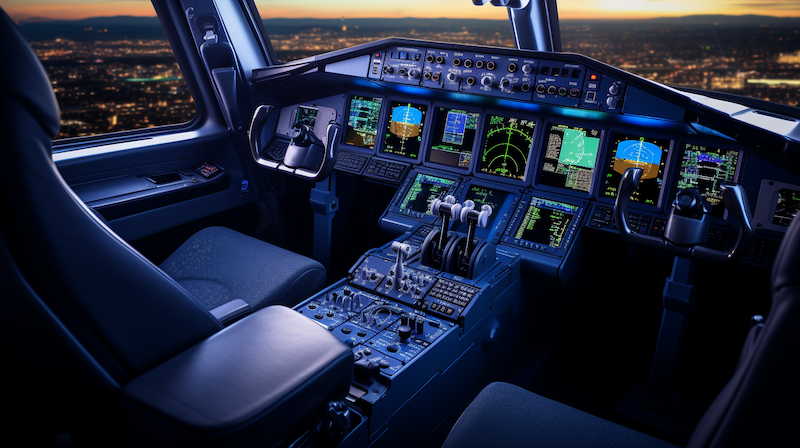In the vast world of aviation, the term “autopilot” often comes up, sparking curiosity and questions. What exactly is an autopilot in an aircraft? How does an autopilot work? And crucially, does it mean that pilots can kick back and relax while the aircraft flies itself?
Autopilot in an aircraft is a highly advanced system that automates a plane’s operations, relieving the pilot from constant, hands-on control. This sophisticated technology was developed to augment safety, improve efficiency, and reduce the workload of pilots. The autopilot system can manage critical tasks such as maintaining a stable flight path, controlling the altitude, or guiding the aircraft to a specific course.
In this blog post, we will unravel the mystery of the autopilot in an aircraft, exploring its functionalities, how it contributes to the safety and efficiency of a flight, and debunking some common myths surrounding it. Buckle up as we ascend into the technological skies of the aviation world!
How does an autopilot work in an aircraft?
Before understanding how autopilot works, let’s understand some basic components of flight that control its three-dimensional movements.
Control surfaces are fundamental to the handling and control of an aircraft in flight. The design of these components is such that they are usually hinged or movable areas that affect the flow of air around the aircraft.
Here are some examples:

- Ailerons: These are located on the trailing edge of the wings, usually towards the wingtips. They control roll (side-to-side tilting) of the plane.
- Elevators: Found on the tail section (the empennage), these control the aircraft’s pitch (nose up or nose down).
- Rudder: This is a vertical surface, usually hinged, located on the tail section. It controls yaw (left and right movements of the aircraft’s nose).
- Flaps: These are on the trailing edge of the wings and increase lift at slower speeds, such as during takeoff and landing.
- Slats: Located on the leading edge of the wing, they also help increase lift at slower speeds.
- Spoilers: Found on the top surface of wings and used in flight to decrease lift and increase drag. They are also used on the ground for braking.
These components work together to control the aircraft’s direction, altitude, and speed. The sensors provide real-time data about the aircraft’s current state, including its position, speed, and direction. This data is then processed by the onboard computer, which makes decisions based on predefined flight rules and the data received.
The computer sends instructions to the servos, which are small devices that assist in the movement of control surfaces. These control surfaces change the aircraft’s direction, altitude, or speed as instructed by the autopilot.
While the autopilot system does a lot of the work, human intervention is still crucial. Pilots must input the desired flight path, altitude, and speed, and they must also monitor the system to ensure it’s working correctly.
When was the autopilot invented?
One would assume the autopilot is a recent invention, given how cars are recently catching up on the autopilot game. The inception of this groundbreaking technology of autopilot dates back to 1912 by Lawrence Sperry, just 9 years after the Wright brothers first successfully took off on the first flight. Lawrence Sperry was an American inventor and aviation pioneer.
Lawrence Sperry’s invention of the autopilot was a remarkable achievement in aviation history. His approach was unique and innovative, leveraging the concept of gyroscopes. Sperry recognised the potential of gyroscopes, devices that maintain orientation based on the principle of conservation of angular momentum. He ingeniously utilized these devices to create an automatic pilot system.
The first autopilot was a mechanical device that used spinning rotors to detect changes in orientation and adjust control surfaces accordingly. This system allowed the aircraft to maintain a set course and altitude without the pilot’s constant input.
In 1916, Sperry introduced his autopilot system to the world during an aviation safety competition in Paris. In a daring demonstration, he had the plane fly itself while he and the co-pilot stood on the wings of the aircraft. This risky yet successful demonstration astonished the spectators and proved the efficacy of the autopilot, setting a new milestone in aviation history.
Can a plane fly itself on autopilot?
Yes, an airplane can indeed fly itself on autopilot, but it still requires a pilot to monitor the plane’s systems and take over if needed, and also feed the data the autopilot needs to navigate and fly the plane.
Flying a plane is no easy feat, especially considering the vast distances modern aircraft can cover. The fatigue that sets in for pilots during long flights can seriously impact their focus, which in turn affects the safety of air travel.
Autopilot takes off this risk by doing the common tasks the pilots have to handle like controlling the altitude, speed and heading of an airplane. This allows pilots to focus their attention on more pressing matters like navigation and diagnosing any issues with the plane or maybe even to take some controlled rest while the autopilot takes charge of flying the plane.
Do pilots land with autopilot?
Yes, pilots can and do use autopilot systems to land airplanes. This technique is often employed in conditions of poor visibility, such as heavy fog. The process, known as an “autoland”, relies on radio signals from the runway known as Instrument Landing Systems (ILS) and the plane’s onboard instruments.
Although the autopilot can land the plane, pilots are still in command and need to monitor the process closely to ensure everything goes smoothly. They must be prepared to take over manual control at any point if something doesn’t go according to plan.
However, not all airports or aircraft are equipped with the necessary technology for autoland procedures. There are some dangerous airports where pilots do not even use autopilots for landing. This is also a reason why people say although there are autopilots in use even today, the pilot jobs would not be taken over by technology anytime soon and that pilots won’t lose their jobs anytime soon.
So, all that said, it’s worth noting that while autopilot aids in navigation and flight stability, it does not replace human pilots. I will soon bring you a detailed blog about why autopilots will not replace human pilots anytime soon.
Some other frequently asked questions about autopilots
How often is autopilot used in planes?
Autopilot is used extensively in modern aviation. Post take-off, pilots tend to engage the autopilot during the climb, maintaining it throughout the cruising stage of the flight, and only disengaging before descent and landing. This means that for long-haul flights, autopilot can be in use for up to 90% of flight time. and on short-haul flights, the autopilot can be used for up to 50% of flight time.
However, it’s important to remember that autopilot usage varies based on factors such as the duration and type of flight, the aircraft model, the airline’s policies, and the prevailing weather conditions.
What is the disadvantage of autopilot in aircraft?
While autopilot systems offer numerous benefits, they are not without their disadvantages. A primary concern is the potential for over-reliance on these systems, which could lead to complacency or a decline in the manual flying skills of pilots.
And like any machine, if an autopilot system fails or behaves unexpectedly, pilots must be able to seamlessly take control and navigate the aircraft manually. Further, autopilot systems cannot interpret complex, dynamic weather patterns or make judgement calls in the same way a human pilot can, making human intervention crucial in certain scenarios.
Finally, the complexity of autopilot systems can also pose challenges – misunderstandings or miscommunications between the pilot and the autopilot system could potentially lead to safety risks.
Why and when do pilots disengage autopilot?
Pilots disengage the autopilot primarily in two scenarios: during takeoffs and landings, and whenever they deem it necessary due to unpredictable weather conditions or sudden changes in flight parameters.
Takeoffs and landings are the most critical phases of a flight and demand precise control and quick decision-making. While some modern aircraft are equipped with ‘autoland’ systems for use in specific conditions, most landings are performed manually to account for variables such as runway conditions and traffic.
During the flight, pilots may also disengage the autopilot when they encounter turbulence or other adverse weather events that the autopilot system might not be adequately equipped to handle. Additionally, in the case of a system failure or unexpected behavior of the autopilot, the pilots would manually take over to ensure the safety of the flight. Thus, while autopilots ease the workload and increase efficiency, skilled human intervention remains indispensable in aviation.

